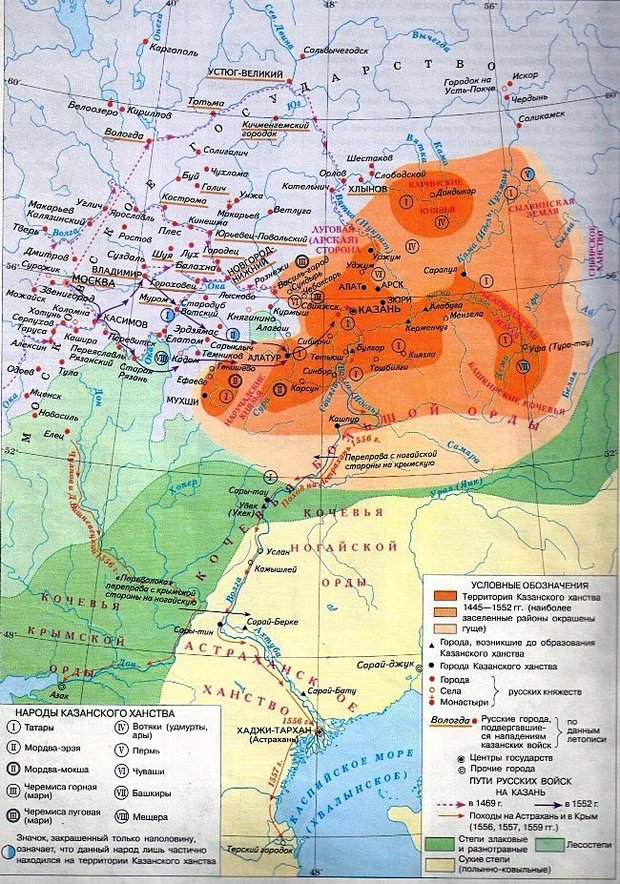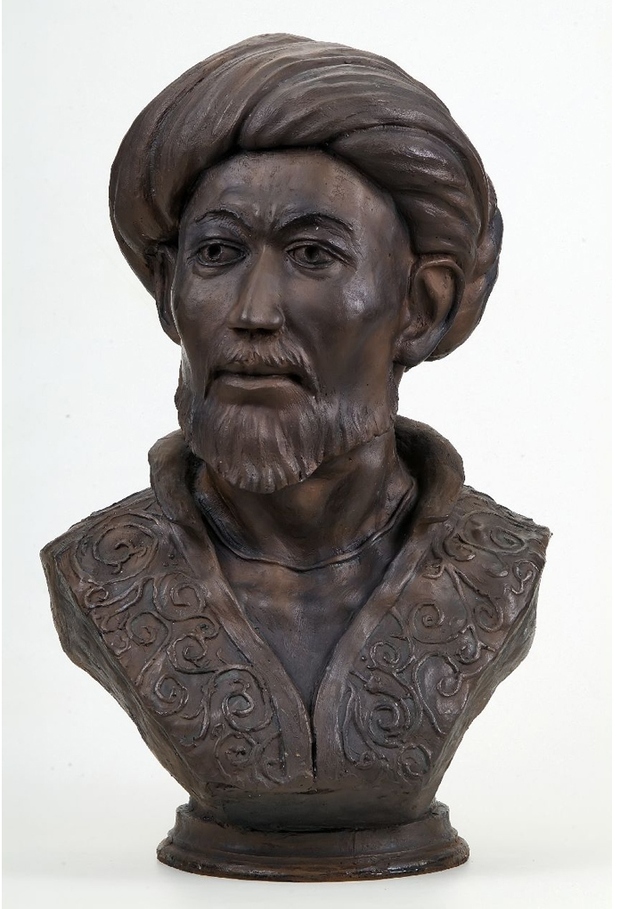‘The issue on khans’ burial arose 40 years after the discovery of their remains for a reason’
Historian Bulat Khamidullin’s column about exhumed Khans Makhmud and Mukhammad-Amin
Remains of two khans were exhumed from their grave found on the territory of the Kazan Kremlin almost 40 years ago, in 1977. Many non-indifferent citizens of Tatarstan, including scientists, worry about the necessity to rebury the remains of the Kazan rulers Makhmud and Mukhammad-Amin. Historian and writer Bulat Khamidullin, who studied the biography of the Kazan khans, dedicated his column to these two historical figures, which was written specially for Realnoe Vremya.
Rest in Peace!
In 1977, famous archaeologist Alfred Khalikov (1929–1994) detected the foundation of the watchtower or the minaret of the Bolgarian period and two tombs of Kazan khans near the Syuyumbike Tower. At the end of 1990s, scientists proved the bones from the burials belong to Kazan khans Makhmud and Mukhammad-Amin, and anthropologist and sculptor from Moscow Tatiana Balueva (1949–2012) carried out a quality construction of their skulls.
Unfortunately, the remains of the above-mentioned Kazan khans, which were exhumed at the end of the 1970s, cannot rest in peace for 40 years. Many of us – public activists, scientists and writers, ordinary citizens – approved the news that President of Tatarstan Rustam Minnikhanov and State Advisor of Tatarstan Mintimer Shaimiev supported the idea of burial of the Kazan khans Makhmud and Mukhammad-Amin in the mausoleum of the Kazan Kremlin…
Kazan first khan's matter
Before the expression of my thoughts about the Kazan khans, I would like to note that Russia – a political and ethnic and cultural heiress of the Golden Horde – became multi-national and multi-religious only in 1557 after the final conquest of the Khanate of Kazan by Moscow. Being a big and economically developed post-Golden Horde state, the Khanate of Kazan (1445–1552/1557) had an amazingly rich history. It was a history that chronologically lived 30-40 years more than the powerful Soviet Union and had more events that the history of many African, South and North American countries. The Khanate of Kazan played a major role in the ethnic, social, cultural and economic history of the big Volga and Priuralsky regions and quite a serious role in the political life of the whole Central Eurasia.

The superior power in the Khanate of Kazan belonged to the Khan (tsar) – a descendant of Genghis-Khan, which significantly enhanced the prestige of the khanate in today's people's eyes. For instance, only knyazs – feudals of a lower social status – ruled in Moscovia at that time. Voluntarily submitted to the descent of Genghis-Khan Mary, Chuvash, a part of Bashkir, Mordva and Udmurt people who asked him 'to be constructors of the new state' (mentioned in History of Kazan by a Russian chronicler) were the population of the khanate except the Tatars who were the majority. I will deliberately note that nowadays there is no source of the 15 th-16th centuries that would insinuate any forced inclusion of non-Tatar ethnicities in the composition of the state. On the contrary, even Russian chronicles prove that the first Kazan khan Makhmud was supported by all local people who saw him as a possibility to strengthen the central power and a real opposition to invasions of their neighbours.

Ulug-Mukhammad, a ruler of the Golden Horde, is meant to be the founder of the dynasty of Kazan khans. Many written documents of the 15 th-16th centuries prove it.
Kazan khan Makhmud
…In the winter 1437, a 3,000-army of Ulug-Mukhammad ran from the Golden Horde and seriously defeated a 40,000-army of great Moscow knyaz. Young Makhmud also participated in the famous battle. In the spring 1445, Makhmud walloped Vasily II's army who was taken prisoner. It did not last for much time: the great knyaz was ransomed for a huge amount of money, and it was asked to give room for the Tatars' activity on the Russian territory. Ulug-Mukhammad died in 1445. His death made Makhmud think about senseless of the further fight for the throne of the Golden Horde and necessity to settle down in the Volga Region that Andrey Kurbsky called 'paradise'. According to chronicles, Makhmud conquered Kazan in the autumn 1445 and started to rule there.
So, the Khanate of Kazan appeared. And people from the Golden Horde, Astrakhan, Azov and Crimea came there.
Great Knyaz Vasily II did not pay his tribute to Khan Makhmud immediately. It resulted in visits of the Kazan Tatars to the Russian borders in the 1446-1447s. Only then peaceful relationships were established between Kazan and Moscow that favoured the economic and cultural development of both states. In historian Mikhail Khudyakov's opinion, 'the twenty years from 1446 to 1466 are supposed to be a period… when Kazan finally became a centre of international trade on the Volga River… The citizens of Kazan started to develop their activity in trade, and Kazan became a first-class centre of commodity turnover in Eastern Europe. Merchants from the Middle Asia, Siberia, Persia, Transcaucasia, all Volga Region and Russia used to come there'.

After Khan Makhmud's death, his sons Khalil (1467) and Ibrahim (1467–1479) ruled the state. The largest Moscow-Kazan War in 1467–1469 took place under Ibrahim. Khan Ibragim and well-known Nogay princess Nur-Sultan's son Mukhammad-Amin was the second character of my story.
'Bolgarian knyaz'
Mukhammad-Amin was the ruler of Kazan in 1485, 1487–1496 and 1502–1518 years. As an adolescent, he was sent to Kashira where his pro-Moscow political orientation formed. The khan had to leave the throne because the Tatar aristocracy was not satisfied with him. In 1487, according to several Russian chroniclers, 'The Great Tsar of all Russia Ivan Vasilievich himself made him reign in Kazan and executed local rioters'.
During the Mukhammad-Amin years in 1487-1496, the tributary system between Moscow and Kazan stopped, and Moscow established a protectorate over the Khanate of Kazan. Ivan III was officially titled 'Bolgarian knyaz' (because the Tatars usually called Kazan Bolgar al-Jadid and the khanate – Bolgarian vilayat). Now Ivan III named the Kazan khan 'brother', in other words, treated him as a person of the same social status. Since then the khan had to discuss all important decisions with Russian governors and help the Russian army in fights with neighbours.
The Kazan feudal elite was not satisfied with that state of affairs. This is why in the summer 1505, Mukhammad-Amir went to war in order to get rid of the Russian protectorate. In 1505-1507, Vasily III's suffered several serious defeats. In March 1507, negotiations on peace started on the Kazan khan's initiative. This document was signed in 1507 and was renewed in 1508, 1512 and 1516.
It means that there was peace between the states, mutually beneficial trade developed until the end of the ruling of Mukhammad-Amin. Tatar cities became larger and stronger, crafts and agriculture flourished. It is written in detail in endeavours of Mikhail Khudyakov, Salyam Agishev, Aleksander Bakhtin and Bulat Khamidullin.
As an educated person and talented poet, Mukhammad-Amin paid great attention to the development of culture and people's education by inviting singers who had good voices and skilful artists, building numerous educational establishments, etc.
After Mukhammad-Amin's death (the last from Ulug-Mukhammad's dynasty), the Kazan elite invited khan Shakh-Ali from the Khanate of Qasim to occupy the throne…

Sacral number of 40
In conclusion, I would like to note the formation and prosperity of the Khanate of Kazan were directly connected with the personal characteristics of certain khans who defined main directions of its progressive development. It should be admitted the ruling of Makhmud and Mukhammad-Amin – descendants of Ulug-Mukhammad – who were talented state workers as well as skillful diplomats and fearless captain, gifted poets had a remarkable impact on the history of all ethnicities of the Middle Volga Region and future Russia, in general.
The issue on the burial of the khans possibly arose 40 years after the exhumation of the remains from their tomb for a reason. The number 40 for the Muslims and other Abraham religions has a sacral meaning… Rest in peace, Kazan khans, khans who fought and created!